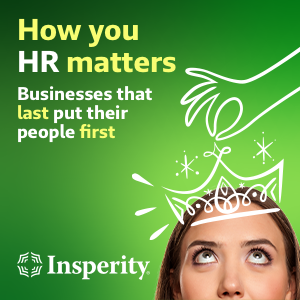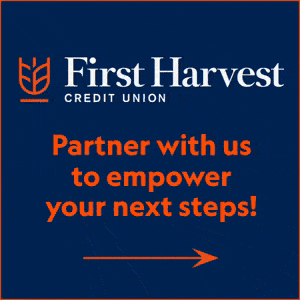
The Great Resignation & The Future of Work: Shana Francesca on How Employers and Employees Are Reworking Work Together

When it comes to designing the future of work, one size fits none. Discovering success isn’t about a hybrid model or offering remote work options. Individuals and organizations are looking for more freedom. The freedom to choose the work model that makes the most sense. The freedom to choose their own values. And the freedom to pursue what matters most. We reached out to successful leaders and thought leaders across all industries to glean their insights and predictions about how to create a future that works.
As a part of our interview series called “How Employers and Employees are Reworking Work Together,” we had the pleasure to interview Shana Francesca.
Shana Francesca is a scholar of intentional and ethical leadership and living, a keynote speaker, workshop facilitator, consultant, founder, and CEO of Concinnate LLC. Shana believes we become infinitely more impactful as leaders and as humans when we understand the power of community and our role inside of it. Knowing that an organization is a type of community, and that community is an ecosystem where every part and person must be honored and empowered and that this understanding, drives profitability.
Thank you for making time to visit with us about the topic of our time. Our readers would like to get to know you a bit better. Can you please tell us about one or two life experiences that most shaped who you are today.
Iwas born into an abusive household and raised inside of an Evangelical Christian cult. My reality was one where I was most often valued only for my obedience and my labor. I was punished for being curious or questioning, for being myself or daring to have an opinion that was anything other than the opinion of those in authority over me. Daring to question what was harming me was seen as a threat to the system and so I was deemed a threat and treated as such, it was fascism on a personal level. I think that fascism and abusive households are reflections of one another.
As a child, my labor was exploited for the financial gain of the church/school/cult I was raised in. I was told that it was my duty to support the will of God but God’s will always seemed to increase my suffering and force me to swallow it for “the greater good”. It became clear that my good was never the responsibility of people who ‘spoke for God’s’ agenda. My anguish was ignored, and in some cases, actively hidden from authorities by the church, while my labor and my misery were used to increase the position, power, and financial gains of certain people within the cult.
Experiencing firsthand what I now know to be extremely unethical, intentionally manipulative, and deeply harmful leadership, was the beginning of my journey and it certainly shaped who I am today. When I left the cult at twenty-six and began my deconstruction and healing journey there was a lot to learn. Quickly I began to realize that there were traces of the way the leadership inside the cult behaved in applications of leadership in our society at large.
As a genuinely curious person, I began to wonder what leadership could look like, what it could create and foster, and how that might affect what a company brought to market, how it marketed, client experience, and profitability. I also began to wonder what it would be like to run my own company, what kind of culture and environment did I want to create and how exactly did I go about doing that. That research started for me three years after I left the cult, at twenty-nine years old, and continues to this day, more than a decade later and seven years after starting my own company.
I am certain that these experiences, healing from them, discovering who I am and who I want to be in the world, learning, cultivating my curiosity continually, and growing, led to me becoming a scholar of intentional and ethical leadership and living. Now looking back, it feels almost inevitable that I would do the work I do now. I have spent nearly my entire life, especially early on, trying to figure out how to be human, because I wasn’t taught how to be human, nor was I allowed to be, I was taught how to survive inside a high-control religious institution and inside capitalism.
Learning how to become human myself, and empowering other people and leaders to do the same is my life’s work. I continue to share my story through interviews like this one, podcasts, and articles. I am currently preparing my book submission, sharing the story of transforming my life from cult member to scholar of leadership, the working title is How I Became Human. The purpose of the book is to continue to connect with people and be a part of positive change in the world sharing how curiosity, respect, and accountability changed my life and became the foundational principles of my work.
Let’s zoom out. What do you predict will be the same about work, the workforce, and the workplace 10–15 years from now? What do you predict will be different?
What will be the same is human nature. We all want and need to be seen, heard, understood, and valued.
As far as what will be different, I want to be a part of painting a picture of what work could look like. In the next 10–15 years we could transform work and work environments as we know them.
Work could look like a diverse community of people engaged together to innovate, including in how work is done, what products and services are brought to market and how they are marketed, the way employees are empowered to show up, and how they profit from their contributions. We know from Citibank’s study in 2020 that the American economy has lost out on 16 trillion dollars in economic gains because of a lack of diversity. Let’s be clear diversity is not hiring a few people of differing genders and skin colors, checking the box, and moving forward with business as usual.
Truly understanding diversity and what it takes to support it, is to take a step back and understand ecosystems. We need to shift how we view organizations and understand that they need to function more like ecosystems and communities rather than strict hierarchies with a lonely leader or leaders at the top isolated from understanding the impact of their actions, on the people (and living beings) being impacted.
National Geographic defines an ecosystem as a geographic area where plants, animals, and other organisms, as well as weather and landscape, work together to form a bubble of life. (NationalGeographic.org) What if we as leaders strove to create a ‘bubble of life’? And what if in that environment, innovation and exponential profitability were inevitable?
What if leadership is recognizing the value of every part of your organization as an essential part of an ecosystem, being continually invested in honoring it, and being a consistent and active part of the success of that ecosystem as a whole and each person who is a part of it?
If we go back to National Geographic’s definition of an ecosystem, it’s like leadership is the landscape and the weather. Leadership creates the central foundational vision and the support for their people to fulfill that vision. Leadership also drives culture, aka the weather.
What if we created environments where our people truly feel like they are living while they are working? How do you think that will transform profitability? And in that environment, turnover would be significantly decreased reducing costs and creating long-term benefits from investment in our people. These are just some of the questions and concepts I dive into with leaders in my work.
What advice would you offer to employers who want to future-proof their organizations?
Diversity and Innovation. These two things are impossible without one another. The foundation of my work is curiosity, respect, and accountability and the way that all three work together to build relationship, empower us to form community, and drive connection. When I say connection, I don’t just mean to one another, I mean an ever-expanding understanding of what connection is and what life, ideas, concepts, etc. are in fact connected and how those connections could transform our world and drive innovation and profitability.
When you think about it, at its core innovation is about the transformation of the understanding of connection. It’s about revealing a relational dynamic. To do that, you cannot continue to look at the world in the way you always have. We need to transform the way we view the world, we need others, who have and do experience the world in ways we do not. We need others who have a relationship with the world that in many ways is wholly unlike our relationship and then we have to figure out how, in fact, those very different experiences have formed who we are and look for what is shared. It is in the push and pull, of at the same time, different experiences and yet same/different understandings that we can ground those variations and similarities in relationship and community and drive innovation.
What do you predict will be the biggest gaps between what employers are willing to offer and what employees expect as we move forward? And what strategies would you offer about how to reconcile those gaps?
Employees are demanding transparency, inclusivity and to be paid thriving wages. We know that wage gaps disproportionately affect women and the BIPOC (Black, Indigenous, Person of Color) community and more specifically people at the intersection of various marginalized identities. At the same time, we know that 85% of the neurodivergent/autistic community is unemployed and many of those who are employed are underemployed. We also know that in general people who are underemployed are often overworked, performing the work of several employees and then within a few years so badly burned out they often become temporarily or permanently disabled. The lack of presence of diverse individuals is not due to a lack of ability to contribute to work environments significantly, it is a lack of accommodation, understanding, and making space for empathy and it is costing companies trillions to continue to not invest in diversity.
We know one of the significant ways wage gaps are perpetuated, as do employees, is lack of transparency. They also are acutely aware of CEO pay increasing exponentially while they have to fight for a 2–4% increase year over year which doesn’t even keep up with inflation. We can look at the example of a company recently having all employee’s pay made public, the next day lost a huge percentage of its workforce and now has declared bankruptcy unable to find a financial backer to help keep the company afloat. The way to avoid this is not more secrecy, it’s transparency. If you don’t have anything to hide as far as worker pay, there is nothing for employees to go looking for and if you have something to hide people will not work for you.
In addition, people are increasingly taking inventory when they enter spaces. We are collectively looking around and seeing not only who has a seat at the table but who is empowered to be a part of the conversation and who is leading conversations and empowered to facilitate change. People are looking for representation and equity. Employees are looking for intentional incorporation of a wide variety of people. It is when we see this type of empowered inclusivity, diverse community, that we know what makes us unique will too, be not only accepted but honored and valued.
Employees expect to see inclusivity, they expect their individual and collective, humanity to be honored and empowered and they expect to make thriving wages for work contributing to a thriving organization and bottom line. This is the bare minimum; this is supporting a healthy ecosystem.
Transparency is a huge step toward empowering diversity and driving innovation. We cannot expect our people to contribute to our thriving if we are not contributing to theirs and that thriving needs to be equitable and empowered by diversity. The benefits for everyone, the company, clients, and employees alike are exponential.
We simultaneously joined a global experiment together last year called “Working From Home.” How will this experience influence the future of work?
We know that many, many, companies now provide much more flexibility to how and where work is performed. This puts companies who are demanding a return to work in person in a difficult spot. In my own life, I know many people in rather prominent positions within their organizations who are looking for opportunities elsewhere because their employers are not allowing people to work from home. Since we know productivity increases while working from home, employees are not going to want to continue to work for companies that refuse to extend that flexibility.
There are of course jobs that were never and can never be remote but for those that can, providing that flexibility is a must-have.
Employers have to ask themselves why they would want to force employees to work in person if their job does not require it, because make no mistake about it, employees certainly are asking themselves this question. Furthermore, employers have to ask themselves are they willing to continue to deal with the fallout of employees leaving and being unable to find people to replace them?
Empowering employees to work from home not only improves their quality of life by giving them back time that was in the past wasted on commuting and the money they spent to commute but also improves their job satisfaction. The cost of living keeps rising, employees need ways to cut costs so they can afford to live. This is a really simple way to ease people’s financial discomfort and give them back a resource they can never have more of, time.
Employers need to continue to adapt and be willing to try new things when it comes to supporting company culture but this requires letting go of control. It requires trust to be built and actively maintained. We do not have to see employees working to know that they are continuing to complete their work and for it to be done well. I see more companies not only having already settled into a flexible norm but also exploring the ways that, that translates into the way they connect with potential customers and existing clients and expand the ways they can serve clients. Being more flexible about virtual vs. in-person working also helps to cut down on expenses around travel and in-person meetings. We can work to find a balance between in-person and virtual and know that there is no absolute answer one way or the other.
Again, if we want to increase profitability, we have to be willing to explore ways of experiencing the world and interacting with the world and one another that we have not in the past.
We’ve all read the headlines about how the pandemic reshaped the workforce. What societal changes do you foresee as necessary to support a future of work that works for everyone?
I will always go back to community and connection. We saw a rise in curiosity, necessarily brought forward during the pandemic. We had to find new ways to work, new ways to connect, and new ways to experience the world while not being able to be in it, in the same way. We saw a global recognition of the ways we are all connected and that the suffering of one group of people is something as leaders and as humans we could help to alleviate or eliminate, if and when we choose to come together and take action.
We saw the need for trust and where it is lacking. We saw people confused and hurt and not having a clear understanding of where to turn for help. We saw the vulnerability of our essential workers and realized just how essential they are. We collectively realized that they need to be honored and that has to be reflected in how they are paid and how they are supported.
This extends to this moment still. I know many nurses who have left and are currently leaving nursing permanently, not exclusively because of pay but because of toxic work environments, and lack of staffing which has led to profound burnout. In other places, we know that the nurses are leaving because of lack of pay. I know one nurse in my town in South Jersey who left a prestigious globally recognized medical institution and now splits her time between South Jersey and New York State. She is being paid twice as much as she was and her parents now are co-parenting their granddaughter to support her as she splits her time.
We know that the problem is not just in nursing. It also includes support staff, its teachers, it’s far too many people. We know that 60% of the working population in the US makes less than 40k a year. Some organizations proffer that 53% of houseless individuals work a job and 40% have a full-time job. This kind of wealth inequity is not only hurting people, but the economy, and cannot continue. We have to do something major to change this dynamic.
I also see employers taking bold steps to close the gap on worker compensation turning to profit sharing or to converting their companies to ESOPs (Employee Stock Ownership Plan) and taking note from companies like Gore & Assoc, Bob’s Red Mill, and Stewart’s Shops to find ways to better and more equitably honor their people. I hope this shift continues and gains more and more traction.
What is your greatest source of optimism about the future of work?
The curiosity that leaders approach me with gives me great amounts of hope. Leaders want to understand how to better serve their people and for their organizations to be set up to thrive long after they are gone. They want to see the legacy of their hard work continue or their family name be carried on or their non-profit be able to better serve their community.
No change is possible without curiosity, so the investment in curiosity gives me great amounts of hope.
Our collective mental health and wellbeing are now considered collateral as we consider the future of work. What innovative strategies do you see employers offering to help improve and optimize their employee’s mental health and wellbeing?
There are some simple, really actionable things employers can and are doing. There is no one-size-fits-all solution but my answer is always, to talk to your people. We saw this change the trajectory of, for example, Cambell’s Soup. You have to treat your employees the same way you would clients, find out their pain points and then figure out how you can address them. It sounds simple, and it is, but the execution means being willing to wade into uncomfortable conversations and creating safe environments for them to happen in, and then taking action and being consistent, this may require outside help so that employees feel safe to voice their needs and not be judged or ostracized.
Employer-employee is a relationship, we have to treat it that way and invest in it that way and be aware, that what we don’t care for crumbles and that crumbling has real-life measurable financial reproductions.
It seems like there’s a new headline every day. ‘The Great Resignation’. ‘The Great Reconfiguration’. And now the ‘Great Reevaluation’. What are the most important messages leaders need to hear from these headlines? How do company cultures need to evolve?
The most important message is the one that people are sending to leaders, we need to be supported. We need to be valued and there has to be consistency. Promises made must be delivered upon and when they can’t, there needs to be transparency. I will say it again, we cannot expect employees to contribute to our companies thriving when they are not thriving. It is that simple and yet that nuanced. Because each person we employ is different, their needs, their desires, and their contributions are all unique. We have to create an environment where people are supported to be themselves, feel safe to be themselves, and are consistently cared for if we want them to consistently show up and contribute. The future of work is continued investment in reciprocity, in the relationship between leaders and those they lead, and revisiting what leadership looks like in general.

Let’s get more specific. What are your “Top 5 Trends To Track In the Future of Work?”
- Mental & Overall Wellness. I really hope this doesn’t end up being a trend and instead is something here to stay. I see so many companies investing in extended amounts of time off for mental health days that can be taken whenever needed. For new and expecting parents to be given the time and space to care for themselves and their child/children both before and after the child has entered their lives, regardless of how. I also see much more flexibility around being able to work from home to help support ailing family members. We have a long way to go in normalizing the fact that people are unique and so people’s needs will vary around their overall health, and more and more companies being flexible in this regard benefits companies and employees alike.
- Shorter Work Weeks. When I was coming up in the corporate world it was expected that I would work a full 40-hour work week and then attend networking events, dinners, etc ‘on my own time’ and essentially work more like 60 hours a week without due compensation. This is just my own personal example but there are hundreds of versions of this where companies insist on access to employee’s time off the clock, including asking them to come in and prep for their shifts before start time, etc. Companies that are supporting their staff in creating separation, having boundaries, and working shorter work weeks are seeing the benefits. Productivity and revenue remain on pace and consistent, while employee satisfaction increases, burnout decreases and sick time decreases. It is a win-win and I am encouraged by the number of companies taking the plunge and figuring out how to make a 32-hour work week, work.
- Happy Employee…Happy Customer. There is a saying I think most of us are familiar with, Happy Wife, Happy Life…well we are now applying that same logic to our employees. If we focus on our employees and they are happy and thriving then our products, service, and customer experience are going to be significantly enhanced, driving client retention and long-term profitability. Providing snacks for our employees is not really what we are talking about here. Instead, we are talking about making sure that employees feel seen, heard, understood, and valued in a variety of ways, and this is essential. Again, I hope none of these are actually trends and instead stick around because most of them are just good common sense.
- Diversity, Equity, and Inclusion. We have already touched on this earlier in the interview but it bears repeating. Diversity drives revenue. You want to do better as a company, be inclusive. It’s that simple and that hard.
- Ethical Leadership There is a necessary examination of leadership, asking ourselves what it looks like to truly support our employees so they can support our clients and be a part of a thriving organization. This requires us to get curious, be respectful, and practice accountability, which also happens to be the foundation of my work. So, this answer is how I see my work dovetail with the pain points I see for organizations. We know that a shift in leadership is being required and I am seeing the way my work in Intentional and Ethical Leadership is a necessary part of the solution and seems to be the foundation for all other work companies are doing to improve culture and drive revenue.
I keep quotes on my desk and on scraps of paper to stay inspired. What’s your favorite “Life Lesson Quote”? And how has this quote shaped your perspective?
And the day came when the risk to remain tight in a bud was more painful than the risk it took to blossom. -Anais Nin
This quote’s impact on me and my work has continued to morph and change as I do and has continually proved how relevant it is. I think curiosity, which is one of the foundations of my work, requires us to release our right to comfort to ask ourselves if the preservation of our comfort is in fact, extremely harmful. For all of my years on this planet, I have NEVER done a single thing that I was proud of, or made a necessary change in my life, relationships, or business that has not required me to continually release my attachment to convenience and become comfortable with being uncomfortable.
Having grown up the way I did, I can understand, that it feels like it might be safer to make friends with the pain you already know. In my experience, when I have pushed for change, sure, things got more painful at first mostly because of the reactions of people around me, but ultimately, I have found my way to an existence in the world that provides me more joy and fulfillment than I could ever imagine. We can also recognize when we make change together it becomes a much more powerful thing and becomes less painful for us both individually and collectively.
Fear and pain are powerful things. For myself, I have redefined fear as the indication that I have reached the edge of my knowledge and/or understanding of what I thought myself capable of. For me pain or discomfort, when it comes to learning, growing, and changing is usually an indication that I have something I need to be accountable for that I did in the past. Something I didn’t realize was harmful, that I need to clean up. When we transform our understanding of fear as an indication that growth is necessary, then we can make peace with the reality that expansion is an uncomfortable process that leads us to let go of being a bud and bloom and as we bloom, we can empower the blooming of the incredible people we get to share this world with.
We are very blessed that some of the biggest names in Business, VC funding, Sports, and Entertainment read this column. Is there a person in the world, or in the US, with whom you would love to have a private breakfast or lunch, and why? He, she, or they might just see this if we tag them.
Mel Robbins. I recently applied to be on the Mel Robbins Podcast, it would be a privilege to be a guest. It has been my honor to be on some incredible podcasts in the top 1% in the world, but Mel’s is at the top of my list of the podcasts I would love to be on in 2024. I think it would be a moving and powerful conversation, knowing the way Mel holds space for conversation and how getting to the heart of things is what I think we both do. When it happens, I know it will be incredible.
Our readers often like to continue the conversation with our featured interviewees. How can they best connect with you and stay current on what you’re discovering?
I love when people reach out so you can email me directly, Shana@Concinnate.world and check out my website www.concinnate.world and subscribe to my email list. I write each email myself (I hired a marketing firm for a while and my analytics tanked so I decided this needs to come from me) and I do my best to share as much information as I can and create moments for connection as human beings through events and workshops.
Thank you for sharing your insights and predictions. We appreciate the gift of your time and wish you continued success and good health.
About The Interviewer: Karen Mangia is one of the most sought-after keynote speakers in the world, sharing her thought leadership with over 10,000 organizations during the course of her career. As Vice President of Customer and Market Insights at Salesforce, she helps individuals and organizations define, design and deliver the future. Discover her proven strategies to access your own success in her fourth book Success from Anywhere and by connecting with her on LinkedIn and Twitter.
Additional Info
Source : https://medium.com/authority-magazine/the-great-resignation-the-future-of-work-shana-francesca-on-how-employers-and-employees-are-8b4ded7d25a1






